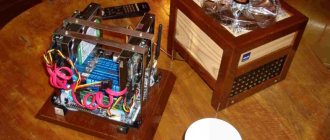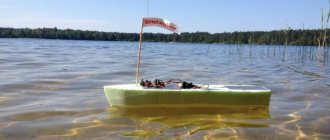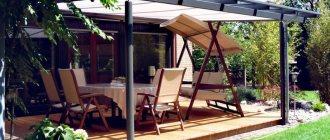Dimensions
When choosing sailing boats, future owners should pay special attention to the size of the vessel. The number of crew that can be accommodated on board, the purchase budget, and the overall level of comfort directly depend on this. The following options are currently available:
- Wooden and inflatable sailing boats measuring 25-30 feet. They are characterized by a reduced level of comfort and low speed of movement. However, during operation, the owner will be pleased with the relatively low costs of maintaining the watercraft. Such vessels are quite easy to control. And there are no problems finding storage space here.
- Sailing boats of 30-40 feet have optimal dimensions in terms of seaworthiness and comfort level. Such a vessel can easily accommodate a crew of 6-8 people. Sailboats of this size have a spacious cockpit and bow, where there is plenty of space for relaxing and sunbathing.
- Sailboats over 40 feet in length are a favorite size for people who enjoy long-distance sailing. The spacious deck provides increased comfort during operation. In general, a large sailing boat offers excellent performance, convenience and prestige, but at the same time a high price.
How modern pleasure sailboats came to be
The first yachts were born from small high-speed vessels for transporting people, courier delivery and transporting goods. Dutch shipbuilders began to build pleasure sailing ships quite en masse starting from the end of the 16th century. Naturally, the main demand was provided by crowned heads and nobles close to them.
In 1826, the first sailing regatta, Cowes Week, took place under the patronage of King George IV. Competitions were held on gaff schooners and tenders. By the way, he began to get involved in yachting much earlier, when he was Prince Regent.
Unlike the first papyrus sailboats of the ancient Egyptians, which had one straight sail, most often a modern yacht has three sails:
- The mainsail is a large sail that is attached to the mast.
- A jib is a smaller sail that is attached to the stay (the cable that holds the mast in place at the front).
- A spinnaker/genaker is an additional light sail of a large area, hoisted on passing courses.
Sustainability
The sail acts as a means of converting the aerodynamic force of the wind into thrust, which forces the boat to move forward. However, to be able to use sails, a vessel requires the ability to resist capsizing. This is achieved thanks to the stability of the hull, as well as the use of ballast.
Inexperienced sailors should prefer a boat with a wide hull. In this case, when the wind acts on the sail, the base will create a so-called straightening moment, which helps improve stability.
Sports dinghies
As professional yachtsmen say: “Whoever races a dinghy can race anything.” All the basics of yachting can be learned as clearly as possible on these fast and compact yachts.
"Optimist"
The first boat that children aged 6-7 years use. Externally similar to a square trough, this monotype has excellent seaworthiness. Rare in our time, sprint rigging (a thin batten resting against the mast holds the upper corner of a quadrangular sail) makes it possible to touch the history of the sail. Since 1965, the international class association has organized many regattas, including the world championship, and monitors manufacturers' compliance with construction rules.
Length: 2.31 m Beam: 1.13 m Hull weight: 35 kg Draft with/without centerboard: 0.84/0.13 m Sail area: mainsail 3.3 m2 Crew: 1 person Country and year of creation: Denmark, 1961
Class websiteIn the itBoat catalog
Zoom 8 
In 1992, Finnish designer Henrik Segercrantz built an alternative to the Optimist - Zoom 8. A fiberglass monotype with a “cat” rig no longer looks like a “trough”, but like a real sports yacht. The main thing is that Zoom 8 has all the basic sail settings available on large boats. The optimal weight of the helmsman is from 35 to 65 kilograms. So, having started racing as a child, young athletes can continue their careers until they are 18 years old.
Length: 2.65 m Beam: 1.45 m Hull weight: 35 kg Draft with/without centerboard: 0.9/0.2 m Sail area: mainsail 4.8 m2 Crew: 1 person Country and year of creation: Finland, 1992
Class website
"Laser"
In 1969, Canadian designer Bruce Robert William Kirby created a dinghy that became one of the most successful mass-produced monotypes in the world. Conceived as a single sailer with the most simplified settings, it turned out to be a fast and athletic boat. The simplicity of the design and low requirements for the initial qualifications of the yachtsman allowed the Laser to quickly gain popularity. The great racing potential inherent in the designer has led to the fact that since 1996 the class has been present at the Olympic Games as a men's single. In 2008, the female version, “Laser Radial,” also became Olympic: a shortened mast with a sail of 5.76 m² was installed on the same hull. The new product replaced the less successful “Europe” (Class Europe) in the Olympic cycle. Having seen the success of this approach, the next step was to create the Laser 4.7 with an even smaller sail, designed for very young athletes. The main advantage of this design over Zoom 8 is that all the equipment developed by the yachtsman is safely transferred to the older “Laser”. In addition, to start training you will only need to purchase a new sail and one of the two parts of the mast. Not surprisingly, small sailing schools around the world have appreciated this approach, and Laser confidently holds the palm in terms of fleet size among the Olympic classes.
Length: 4.23 m Beam: 1.37 m Hull weight: 59 kg Draft with/without centerboard: 0.88/0.2 m Sail area Laser/Laser Radial/Laser 4.7: mainsail 7.06/5.76/ 4.7 m2 Crew: 1 person Country and year of creation: Canada, 1969
Class website
In the itBoat catalog
"Finn"
Another long-liver has a “cat” sailing rig. In 1949 it was designed by the Swede Richard Sarby. Three years later, Finn found himself in the Olympic program. Over the past years, this class, while remaining a strict monotype, has managed to survive an entire technological revolution. Plywood and Dacron have given way to carbon fiber and cutting-edge laminates. The appearance of the athletes themselves has also changed significantly. While the Finn used to be a heavyweight boat, the modern helmsman may be in the middle weight category, but must be in excellent physical condition. It became one of the first classes where “pumping”—sailing—was officially allowed. And now, even in light and medium winds, the athlete has to constantly perform significant physical work. The boat has many settings and, as a result, requires high skill of the yachtsman.
Length: 4.5 m Beam: 1.5 m Hull weight: 107 kg Draft with/without centerboard: 0.84/0.15 m Sail area: mainsail 10.2 m2 Crew: 1 person Country and year of creation: Sweden, 1949
Class website
470
If in single dinghies all you need is yourself and the boat, then the so-called doubles that follow them already require a crew. The ship's roles are divided quite simply: sailor and helmsman. Moreover, the interaction in this pair should be on an intuitive level.
A classic example of a double dinghy. Designed in 1963 by Frenchman André Cornu, the monotype made it to the Olympics in 1976. The optimal amount of adjustment, combined with a reasonable sail area, allows the crew to easily reconfigure the boat and focus on steering. On the one hand, the 470 forgives many mistakes, which allows athletes to start their journey in doubles with this boat. On the other hand, to win competitions, control technique and understanding of working with sails must be impeccable. The boat is equipped with a trapeze for the sailor: without it, it is no longer possible to effectively tilt such a sail area. Starting from the 2022 Olympics, the 470 boat will become a mix: the crews will be mixed, that is, consisting of a man and a woman.
Length: 4.7 m Beam: 1.7 m Hull weight: 120 kg Draft with/without centerboard: 1.08/0.15 m Sail area: main/jibs/spinaker 9.45/3.59/12.16 m2 Crew: mixed, 2 people Country and year of creation: France, 1963
Class website
"49er" (49er)
The most technical single-hull pair in the Olympic program. The skiff, overloaded with sails, was created by Julian Bethwaite specifically for the 2000 Olympics in Sydney. To effectively cope with the high workload, both crew members work in a trapeze. As a result, the 49ers (49th) places maximum demands on the training and physical fitness of athletes. By analogy with the Laser Radial, the women's double 49er FX (49erFX) was created with the same hull, but a shortened mast and a reduced sail area. Due to its characteristics, this class is a real talent forge for professional teams competing on large keelboats. The intense physical demands combined with the need to fine-tune the sails allow racers to become experts and get the most out of any yacht.
Length: 4.995 m Beam: 2.9 m Hull weight: 70 kg Draft with/without centerboard: 1.45/0.15 m Sail area 49er: main/jibsail/genaker 16.1/5.1/38 m2 Sail area 49er FX: mainsail/jibsail/genaker 13.8/5.8/25.1 m2 Crew: 2 people Country and year of creation: Australia, 1995
Class website
Analogues of sports dinghies
There is a huge variety of pleasure and even cruising boats built according to sports designs. They are excellent for closed reservoirs, easy to transport and operate. Classes on such boats serve as an entrance ticket to the world of yachting for those who are not planning a sports career, are limited by a budget, or do not have a deep enough body of water nearby that is suitable for keelboats. A good example of a cruising yacht is the Laser Bahia, and a cruising dinghy is the Presto 30.
Second manufacturing method
Typically, this is a rectangular sea anchor. The open hole of the device in this case can have a quadrangular, triangular or any other shape. You can make a floating anchor for a boat using an oar pole using your own hands.
It must be thick. A canvas in the shape of a triangle is lashed to it. A weight is attached to the lower corner of the material.
Often, on PVC boats, a weathervane type anchor or a device with a truncated cone is used. This device is made of canvas. The diameter of the base is approximately 40 cm, the length of the device is 120 cm, the diameter at the top of the cone at the cut is 3 cm. The base of the cone is wrapped around a lycrop and reinforced with four longitudinal stripes made of a similar cable. It ends with a loop for attaching drects.
DIY water sail-anchor
DIY water sail-anchor A water sail is a product in the shape of a cone or pyramid with an open base. The base consists of a metal hoop or cross, four slings are attached to it for attachment to the anchor rope. The anchor is pulled by a pull cable attached to the top of the sail. The anchor-sail has a special buoy for lowering and lifting the structure into the water, as well as determining its location in the water.
OPERATION, CARE, REPAIR, STORAGE
You constantly need to monitor the fastening of weapon elements - the tightening of nuts, knots on scatters (ropes), etc. The seams of the sails must be periodically inspected and, if damaged, repaired with lavsan or nylon threads (it is better to repair damage at the initial stage). On rigging, the root ends of the halyards (the point of attachment to the sail units) wear out the fastest. If there is noticeable wear in this place, the halyard can be secured with the other (running) end.
Disassembly of sailing equipment is carried out in the reverse order of assembly. Small parts are placed in a plastic bag. The joints of weapon elements are thoroughly cleaned of dirt and sand, wet gear and other accessories made of fabric and film are dried before laying. The sails are folded like an accordion along the lower luff (the width of the “fold” is 300...500 mm), then the resulting strip is folded in a perpendicular direction. The gear is wound into bays.
Sailing equipment should be stored in a dry, closed room at a temperature not lower than +2 °C.
Drifting boat with sea anchor
If the ship cannot swim to the shore, enter the bay, or choose a place convenient for mooring, and is also unable to steer in the wind using the rudder, then you should resort to using a floating anchor. The device will reduce drift.
At great depths, the device makes it possible to place the ship against the wave. The anchor is located on the bow of the vessel, and it is filled in the water. Then a rope is pulled, which slows down the movement of the boat, turning its bow towards the wind.
The length of the rope must be at least five small boat lengths. The cable is released in a weakened state. It should be no shorter than the anchor rope.
To weaken the impact of waves on the ship and prevent flooding, special oils are used. Oils of animal origin are most effective. Spreading over the water surface, they create a film that prevents the formation of ridges and dampens the energy of waves.
Mineral oils have lower functionality. It is not recommended to use them on small vessels.
EQUIPMENT
MAST FASTENING ON AN INFLATABLE BOAT
| 1 | Rigging: | |
| — pipe bottom of the mast Ф 40х1.5 mm. | 1 PC. | |
| — pipe top of the mast Ф 40x1.5 mm. | 1 PC. | |
| — support pipe 30x30x2 mm. | 2 pcs. | |
| — mast pipe 40x60x1400 mm. | 1 PC. | |
| 2 | Fasteners: | |
| — Screw M8x80 | 4 things. | |
| — Screw — ring M8x60 | 3 pcs. | |
| — Self-locking nut M8 | 1 PC. | |
| — Wing nut M8 | 6 pcs. | |
| — Washer F8 enlarged | 8 pcs. | |
| 3 | Narrow plate | 2 pcs. |
| 4 | Wide plate | 1 PC. |
| 5 | Mast glass | 1 PC. |
| 6 | Ribbon with buckle 1 m. | 4 things. |
| 7 | Passport | 1 PC. |
| 8 | Package | 1 PC. |
GROTTO "LATINSKY"
| 1 | Mainsail sail “Latin” – 3.5/4.2/4.9 m2 | 1 PC. |
| 2 | Rigging: | |
| — pipe bottom rail 30x1 mm | 2 pcs. (for 4.9 m2 – 3 pcs.) | |
| — pipe top rail 30x1 mm | 3 pcs. | |
| 3 | Fasteners: | |
| — M6x25 screw | 4 things. | |
| — wing nut M6 | 4 things. | |
| — M6 washer enlarged | 4 things. | |
| 4 | Bracket 32 mm | 5 pieces. |
| 5 | Carabiner 5 mm | 4 things. |
| 6 | S-shaped hook 3 mm | 1 PC. |
| 7 | Lena with buckle | 1 PC. |
| 8 | Rope 5 mm – 0.5 m | 2 pcs. |
| 9 | Rope 7 mm rigid – 5 m (halyard) | 1 PC. |
| 10 | Rope 7 mm soft – 5 m (sheet) | 1 PC. |
| 11 | Plastic package for sails | 1 PC. |
| 12 | Packaging (p/e) | 1 PC. |
SWITCHES WITH MOUNTING ON AN INFLATABLE BOAT
| 1 | Schwertz (oar) | 2 pcs. |
| 2 | Boat console | 2 pcs. |
| 3 | Small plate | 2 pcs. |
| 4 | Fasteners | |
| — Screw M10x50 | 2 pcs. | |
| — Screw M8x70 | 4 things. | |
| — Wing nut M10 | 2 pcs. | |
| — Wing nut M8 | 4 things. | |
| — Washer F10 | 2 pcs. | |
| — Washer F8 | 4 things. | |
| 5 | Packaging bag | 1 PC. |
STERN BEAM
| 1 | Cross pipe 30x30x2 mm. | 1 PC. |
| 2 | Longitudinal pipe 25x25x2 mm. | 1 PC. |
| 3 | Fasteners | |
| - M8x70 screw | 2 pcs. | |
| — wing nut M8 | 2 pcs. | |
| — washer F8 enlarged | 2 pcs. | |
| — S-shaped hook 4mm. | 2 pcs. | |
| 4 | Ribbon with buckle 1 m. | 2 pcs. |
| 5 | Support plate small for M8 | 1 PC. |
| 6 | Description. | 1 PC. |
| 7 | Packaging (PE bag) | 1 PC. |
Sports catamarans
Tornado
A monotype racing catamaran and the first multihull yacht at the Olympics. The catamaran was designed in 1967 in the UK, and ten years later it participated in the Games program for the first time. For the most effective heeling, the sailor had a trapezoid at his disposal. “Tornado” was excellent on one float and in terms of speed was out of competition with respect to other Olympic classes. In 2000, it was subjected to significant modernization: the shape was changed and the area of the sails was increased, a gennaker and a second trapeze for the helmsman appeared. However, in 2008 the catamaran was excluded from the Olympic program. But it still remains very fast and very attractive for fans of high speed on the water.
Length: 6.09 m Beam: 3.08 m Hull weight: 155 kg Draft with/without centerboard: 0.76/0.15 m Sail area: mainsail/jibsail/spinnaker 16.35/5.29/25.77 m2 Crew: 2 people Country and year of creation: Great Britain, 1967
Class website
Nacra 17
The project was developed in 2011, and already in 2012 it was decided to include the class in the Olympic program for 2016. The first World Championship was held in 2013, but the fleet was very small. In addition, the athletes had many questions about the equipment, which was literally being finalized on the run in order to be in time for the Games. Despite its young age, the class has successfully undergone modernization, and at the 2022 Olympics it will be presented in a version with foils. In fact, this sports equipment can hardly be called a yacht: two floats “fly” above the water on hydrofoils, which requires a number of completely new skills from the crew for traditional sailing. As a result, “Nakra 17” today is the lot of pros aiming for Olympic gold.
Length: 5.25 m Beam: 2.59 m Hull weight: 142 kg Draft with/without centerboard: 0.7/0.2 m Sail area: main/jibs/spinaker 14.45/4/18.5 m2 Crew : mixed, 2 people Country and year of creation: Netherlands, 2011
Class website
GC32
An incredible speed of 74 kilometers per hour, four hydrofoils, a protective helmet as mandatory equipment - all this is an ultra-modern carbon catamaran GC32. It was he who replaced the Extreme 40 at the famous Extreme Sailing Series regatta in recent seasons. This extreme machine revolutionized the idea of sailing racing, making it a truly mass spectacle.
Length: 12 m Beam: 6 m Hull weight: 950 kg Draft sharp course/full course: 2.1/1.6 m Sail area: mainsail/staysail/spinaker 60/23.5/90 m2 Crew: 5 people Country and year of creation: UAE, 2014
Class website
In this article we talked about the most popular models of dinghies and catamarans. In the next part we will talk about keel yachts.
FAQ
When did the history of surfing begin?
In Polynesia, around the four hundredth century AD. And the first fiberglass board appeared in 1946.
What is SUP in windsurfing?
Simply put, paddle surfing. SUP windsurfing boards offer just this type of sport. Inflatable SUP boards are popular; they have many advantages and can also be done independently, although in a different way. But this is not the topic of this article.
The advice given above is to buy a used board. Won't it break the next day?
No, this is prejudice. Moreover, for such things as windsurfing boards - this is still not electrical engineering, and even in a used version they will more often serve for a very long time.
Tags
Sail with your own Sail with your own, sew sails for boats with sails. sail area and elements of sailing equipment, modern sailing fabrics, sewing sails for sports sailing yachts. simple sails for Boats, small boats. your own boat. Boats on a pvc inflatable boat with your own homemade boat. An inflatable boat takes sailing fabrics and produces fabrics over a choice of fabrics. The choice of fabric for the properties of the fabric depends on the location of the door and
gikvetra one body panels side lines yard yachts rubber eye only basic travel











